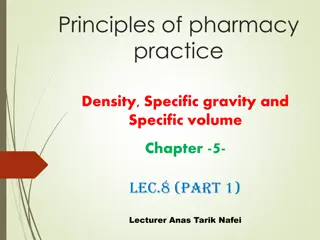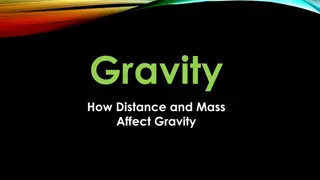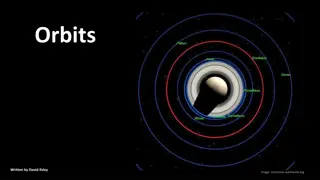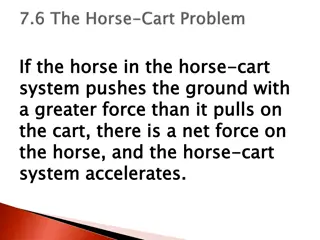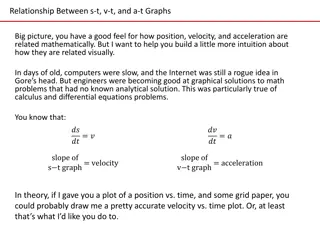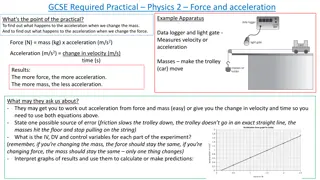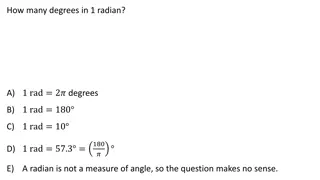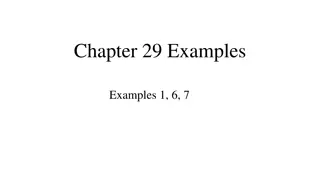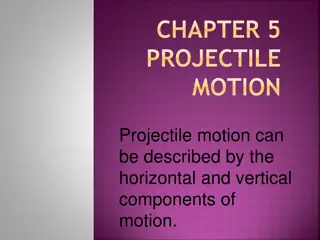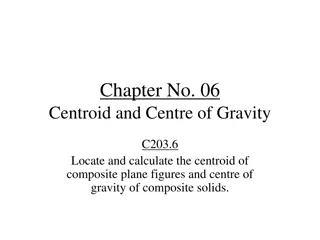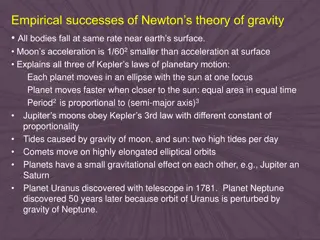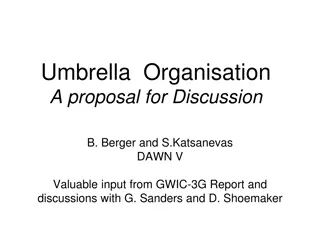Understanding Free Fall and Acceleration in Gravity
Objects in free fall experience acceleration due to gravity, increasing their speed by 10 meters per second each second. The acceleration is denoted by 'g,' with an average value of around 10 m/s². When falling from rest, the speed of an object can be calculated using the formula v = gt. Likewise, objects thrown upwards experience a decrease in speed as they ascend before reaching zero velocity at the peak. This gradual decrease mirrors the constant increase in speed observed during free fall.
Download Presentation

Please find below an Image/Link to download the presentation.
The content on the website is provided AS IS for your information and personal use only. It may not be sold, licensed, or shared on other websites without obtaining consent from the author. Download presentation by click this link. If you encounter any issues during the download, it is possible that the publisher has removed the file from their server.
E N D
Presentation Transcript
4.5 Free Fall: How Fast Falling Objects Imagine there is no air resistance and that gravity is the only thing affecting a falling object. An object moving under the influence of the gravitational force only is said to be in free fall. The elapsed time is the time that has elapsed, or passed, since the beginning of any motion, in this case the fall.
4.5 Free Fall: How Fast During each second of fall the instantaneous speed of the object increases by an additional 10 meters per second. This gain in speed per second is the acceleration.
4.5 Free Fall: How Fast When the change in speed is in m/s and the time interval is in s, the acceleration is in m/s2, which is read as meters per second squared. The unit of time, the second, occurs twice once for the unit of speed and again for the time interval during which the speed changes.
4.5 Free Fall: How Fast For free fall, it is customary to use the letter g to represent the acceleration because the acceleration is due to gravity. Although g varies slightly in different parts of the world, its average value is nearly 10 m/s2.
4.5 Free Fall: How Fast The instantaneous speed of an object falling from rest is equal to the acceleration multiplied by the elapsed time. v = gt
4.5 Free Fall: How Fast If a falling rock were somehow equipped with a speedometer, in each succeeding second of fall its reading would increase by the same amount, 10 m/s.
4.5 Free Fall: How Fast Rising Objects Now consider an object thrown straight up: It moves upward for a while. At the highest point, when the object is changing its direction from upward to downward, its instantaneous speed is zero. It then falls downward as if it had been dropped from rest at that height. How much does the object s speed decrease each second on the way up?
4.5 Free Fall: How Fast The change in speed each second is the same whether the ball is going upward or downward. The instantaneous speed at points of equal elevation in the path is the same whether the object is moving upward or downward. The velocities are different because they are in opposite directions. During each second, the speed or the velocity changes by 10 m/s downward.
4.5 Free Fall: How Fast think! During the span of the second time interval in Table 4.2, the object begins at 10 m/s and ends at 20 m/s. What is the average speed of the object during this 1-second interval? What is its acceleration?
4.5 Free Fall: How Fast think! What would the speedometer reading on the falling rock be 4.5 seconds after it drops from rest? How about 8 seconds after it is dropped?
4.6 Free Fall: How Far For each second of free fall, an object falls a greater distance than it did in the previous second.
4.6 Free Fall: How Far How far does an object in free fall travel in the first second? At the end of the first second, the falling object has an instantaneous speed of 10 m/s. The initial speed is 0 m/s. The average speed is _______________ The distance covered is _________________
4.6 Free Fall: How Far Pretend that a falling rock is somehow equipped with an odometer. The readings of distance fallen increase with time.
4.6 Free Fall: How Far At the end of one second, the rock has fallen 5 meters. At the end of 2 seconds, it has dropped a total distance of 20 meters. At the end of 3 seconds, it has dropped 45 meters altogether.
4.6 Free Fall: How Far These distances form a mathematical pattern: at the end of time t, the object starting from rest falls a distance d.
4.6 Free Fall: How Far These equations can be used for any accelerating object, if it s initial speed is zero and the acceleration is constant.
4.6 Free Fall: How Far think! An apple drops from a tree and hits the ground in one second. What is its speed upon striking the ground? What is its average speed during the one second? How high above ground was the apple when it first dropped?
4.6 Free Fall: How Far For a falling object, how does the distance per second change?








